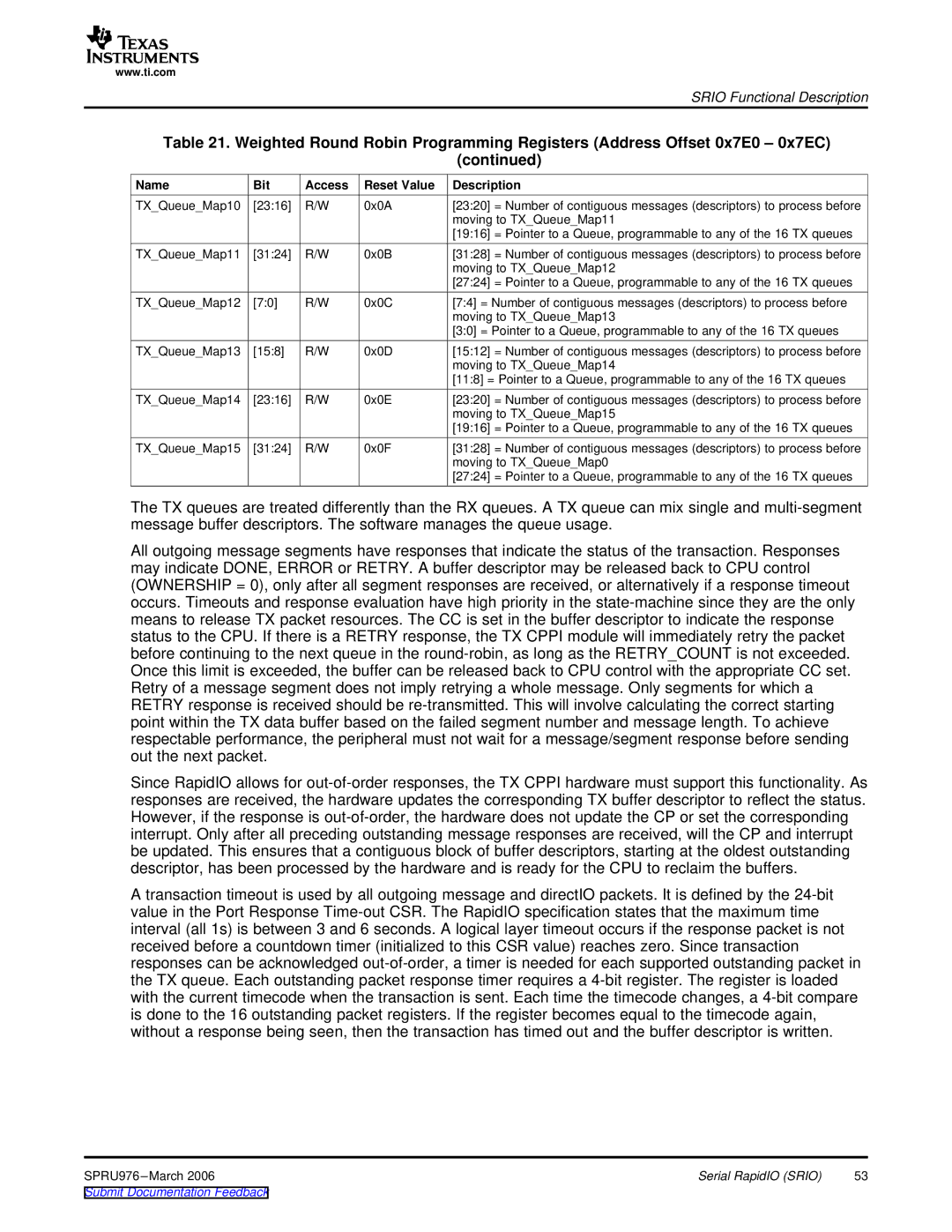
www.ti.com
SRIO Functional Description
Table 21. Weighted Round Robin Programming Registers (Address Offset 0x7E0 – 0x7EC)
(continued)
Name | Bit | Access | Reset Value | Description |
TX_Queue_Map10 | [23:16] | R/W | 0x0A | [23:20] = Number of contiguous messages (descriptors) to process before |
|
|
|
| moving to TX_Queue_Map11 |
|
|
|
| [19:16] = Pointer to a Queue, programmable to any of the 16 TX queues |
TX_Queue_Map11 | [31:24] | R/W | 0x0B | [31:28] = Number of contiguous messages (descriptors) to process before |
|
|
|
| moving to TX_Queue_Map12 |
|
|
|
| [27:24] = Pointer to a Queue, programmable to any of the 16 TX queues |
TX_Queue_Map12 | [7:0] | R/W | 0x0C | [7:4] = Number of contiguous messages (descriptors) to process before |
|
|
|
| moving to TX_Queue_Map13 |
|
|
|
| [3:0] = Pointer to a Queue, programmable to any of the 16 TX queues |
TX_Queue_Map13 | [15:8] | R/W | 0x0D | [15:12] = Number of contiguous messages (descriptors) to process before |
|
|
|
| moving to TX_Queue_Map14 |
|
|
|
| [11:8] = Pointer to a Queue, programmable to any of the 16 TX queues |
TX_Queue_Map14 | [23:16] | R/W | 0x0E | [23:20] = Number of contiguous messages (descriptors) to process before |
|
|
|
| moving to TX_Queue_Map15 |
|
|
|
| [19:16] = Pointer to a Queue, programmable to any of the 16 TX queues |
TX_Queue_Map15 | [31:24] | R/W | 0x0F | [31:28] = Number of contiguous messages (descriptors) to process before |
|
|
|
| moving to TX_Queue_Map0 |
|
|
|
| [27:24] = Pointer to a Queue, programmable to any of the 16 TX queues |
The TX queues are treated differently than the RX queues. A TX queue can mix single and
All outgoing message segments have responses that indicate the status of the transaction. Responses may indicate DONE, ERROR or RETRY. A buffer descriptor may be released back to CPU control (OWNERSHIP = 0), only after all segment responses are received, or alternatively if a response timeout occurs. Timeouts and response evaluation have high priority in the
Since RapidIO allows for
A transaction timeout is used by all outgoing message and directIO packets. It is defined by the
SPRU976 | Serial RapidIO (SRIO) | 53 |
